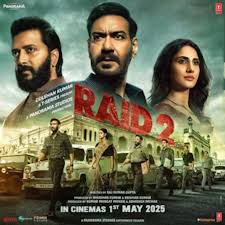A Cinematic Awakening
Traditionally known for its hit musical romances and melodrama, Bollywood has seen a sea change in the last 20 years. Now a wave of filmmakers is testing those borders, exploring the psychological wilderness once reserved for small films that cater to niche audiences. At the core of this transformation, is surrealism which is a film style, where reality and fantasy get confused. It’s not just a little bit of stylistic razzle-dazzle for Indian psychological thrillers to turn to surrealism; it’s a transparent vessel into the subconscious thoughts of its motley characters, even its audience themselves.
From dream sequences to fractured timelines, Bollywood thrillers are increasingly embracing a surreal narrative style. This article unpacks how surrealism shapes storytelling, enhances suspense, and redefines the psychological thriller genre in Indian cinema.
The Roots of Surrealism in Cinema
Surrealism: A Brief Overview
Originating from 1920s Europe, surrealism was a movement that sought to liberate the mind by embracing the irrational, the dreamlike, and the subconscious. Artists like Salvador Dalí and filmmakers such as Luis Buñuel pioneered visual storytelling that defied logic and realism.
Entry into Indian Cinema
Though Bollywood dabbled in surrealism through dream sequences in earlier decades, it wasn’t until the 2000s that the style gained narrative prominence. Influences from global cinema, the rise of OTT platforms, and an evolving audience base contributed to the genre’s rise in popularity.
Defining Characteristics of Surrealism in Bollywood Thrillers
Visual Symbolism
Movies like No Smoking (2007) and Tumbbad (2018) use abstract imagery and visual metaphors to challenge viewer perception. A cigarette isn’t just a cigarette; it represents control, addiction, and freedom, all at once.
Dream Logic
Surreal thrillers often employ dream logic—a narrative structure where events unfold in ways that mimic the randomness and emotional resonance of dreams. Shaitan (2011) and Ship of Theseus (2012) are prime examples.
Disjointed Timelines
Films like Tamasha (2015) and Raat Akeli Hai (2020) use non-linear storytelling to depict psychological fragmentation, a hallmark of surreal thrillers.
Landmark Films That Brought Surrealism to Bollywood Thrillers
No Smoking (2007)
Directed by Anurag Kashyap, this film is often cited as a milestone in Indian surreal cinema. Inspired by Stephen King’s Quitters, Inc., the movie follows a man trapped in a Kafkaesque rehabilitation facility, blurring the line between punishment and psychological warfare.
Ugly (2013)
Another Kashyap masterpiece, Ugly paints a gritty, distorted picture of human nature. The surrealism lies in its relentless exploration of guilt, selfishness, and blurred moral boundaries.
Tumbbad (2018)
Set in a mythological past, this film blends folklore with psychological horror. Its surrealistic landscapes and allegorical themes make it a standout.
Andhadhun (2018)
While not overtly surreal, Andhadhun manipulates reality through an unreliable narrator and plot twists that keep the viewer questioning what is real.
Why Surrealism Resonates with Indian Audiences
Cultural Mythos and Spiritual Symbolism
India has a long history of myths, metaphors, and multi-layered narratives. Surrealism aligns well with these traditional storytelling techniques, offering familiar depth in an unfamiliar package.
Changing Audience Preferences
With the rise of streaming platforms, audiences are more exposed to international content. This has broadened their taste and increased demand for complex, layered storytelling.
Reflecting Societal Angst
Surreal psychological thrillers often mirror real-life anxieties corruption, identity crises, familial pressure and present them in allegorical ways that resonate more deeply.
Technical Craftsmanship: How Surrealism Is Brought to Life
Cinematography
Unusual camera angles, disorienting color palettes, and light manipulation are frequently used to create a dreamlike atmosphere. Cinematographers like Pankaj Kumar (Tumbbad) have mastered this craft.
Sound Design
In films like Andhadhun, sound is manipulated to create tension, confusion, and surreal dissonance, enhancing the psychological impact.
Editing and Narrative Structure
Jump cuts, reverse chronology, and parallel storytelling disrupt viewer expectations and reinforce the surreal experience.
The Future of Surrealism in Bollywood Thrillers
Integration with Emerging Technologies
With advancements in CGI and virtual reality, filmmakers can now craft even more immersive and surreal environments. Imagine a psychological thriller experienced entirely in VR, where the viewer can’t distinguish between dream and reality.
AI and Data Analytics in Storytelling
As AI tools become integrated into scriptwriting and audience analysis, filmmakers can tailor surreal experiences that better align with psychological triggers and narrative expectations.
Global Collaborations
Bollywood’s increasing collaboration with international studios opens the door for more cross-cultural surreal narratives, blending Eastern mythology with Western cinematic techniques.
The Duality of Dreams and Nightmares
Bollywood psychological thrillers and surrealism a passing faze; that’s a storytelling revolution. In their defiance of classic narrative form and their examination of the subconscious, the films represent fundamental truths about human nature and society. From Kafkaesque backdrops to mythological allegories, the surreal terrain of Indian cinema is growing and encouraging us to ask questions about reality, morality and identity.
As technology evolves and audience demand grows, the fusion of surrealism and psychological thrillers will likely become a dominant force in shaping the future of Bollywood. The line between dreams and nightmares has never been blurrier—or more cinematic.
Frequently Asked Questions (FAQ)
Q1: What defines a surreal Bollywood psychological thriller?
A surreal Bollywood psychological thriller blends dreamlike visuals, abstract narratives, and psychological depth to explore the subconscious mind, often blurring the line between reality and imagination.
Q2: Are there any directors known for this style?
Yes, Anurag Kashyap, Anand Gandhi, and Rahi Anil Barve are notable for infusing surrealism into their storytelling.
Q3: Is surrealism in Bollywood influenced by Western cinema?
Partially, yes. While surrealism originated in the West, Indian filmmakers have adapted it to local contexts, incorporating mythology and cultural symbolism.
Q4: Are these films commercially successful?
While not always box-office hits, many surreal thrillers gain cult followings and perform well on OTT platforms due to their uniqueness and depth.
Q5: Can new technologies enhance surreal storytelling?
Absolutely. Technologies like VR, CGI, and AI allow for more immersive, personalized, and psychologically engaging cinematic experiences.